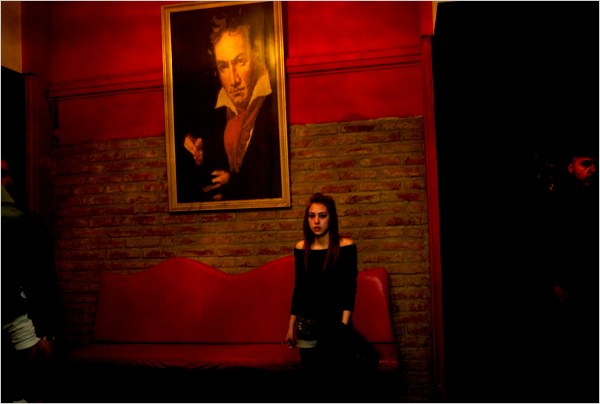This photograph ran in a photo essay accompanying a September 12 The New York Times story about Chile's recent "sexual revolution."

The article chronicles the sexual revolution in one of Latin America's most conservative countries by describing, in titillating specificity, a network of urban partiers among Chile's young elite. The Chilean teens attend gatherings at which making out with as many people as possible is the goal. The power of an image is one of the more significant engines driving Chile's sexual explosion. The teenagers, explains the Times, come together because of the social-networking site Fotolog, on which they post provocative photographs of themselves and engage in digital flirtations with their peers. In its online version, the Times ran a photo essay along with the article. Predictably, most of the pictures were somewhat lurid and voyeuristic: close-up shots of writhing teenage bodies, hands, tongues, bellies, legs. This last one, though, was what caught my eye. The photograph provides a visual counterpoint to the liveliness and, one could say, hedonism of the others. A young girl sits in what looks like a kind of antechamber. The room is bathed in red light, and Beethoven looks over her, forebodingly, from the wall behind her. The girl is sitting alone on a couch. Is she stunned? Scared? And what's going on with that floating male head on the right? The red, black, and gold tones, combined with the austere framing of the photograph, create a frightening, almost Gothic, image. A frightened woman awaits her fate. Though the text of the article does not take a stated position on the explosion of teenage sexual activity in Chile, could this photograph be functioning as a kind of warning? And what might it suggest about the dangers of unleashing female sexuality, specifically?
Recent comments
2 years 29 weeks ago
2 years 44 weeks ago
2 years 44 weeks ago
2 years 50 weeks ago
3 years 4 weeks ago
3 years 4 weeks ago
3 years 4 weeks ago
3 years 6 weeks ago
3 years 6 weeks ago
3 years 6 weeks ago